Newsroom
Why can't the slewing bearing rotate at high speed?
Slewing bearings, also known as turntable bearings, are innovative mechanical components that play a crucial role in various engineering applications. They are designed to support large axial and radial loads while also accommodating overturning moments, which makes them essential in machinery such as cranes, excavators, and other heavy equipment. Despite their robust design and versatility, slewing bearings are not suitable for high-speed rotation. This limitation is due to several key factors related to their operational characteristics, the physical forces at play during high-speed operation, and the nature of the equipment they are typically paired with.
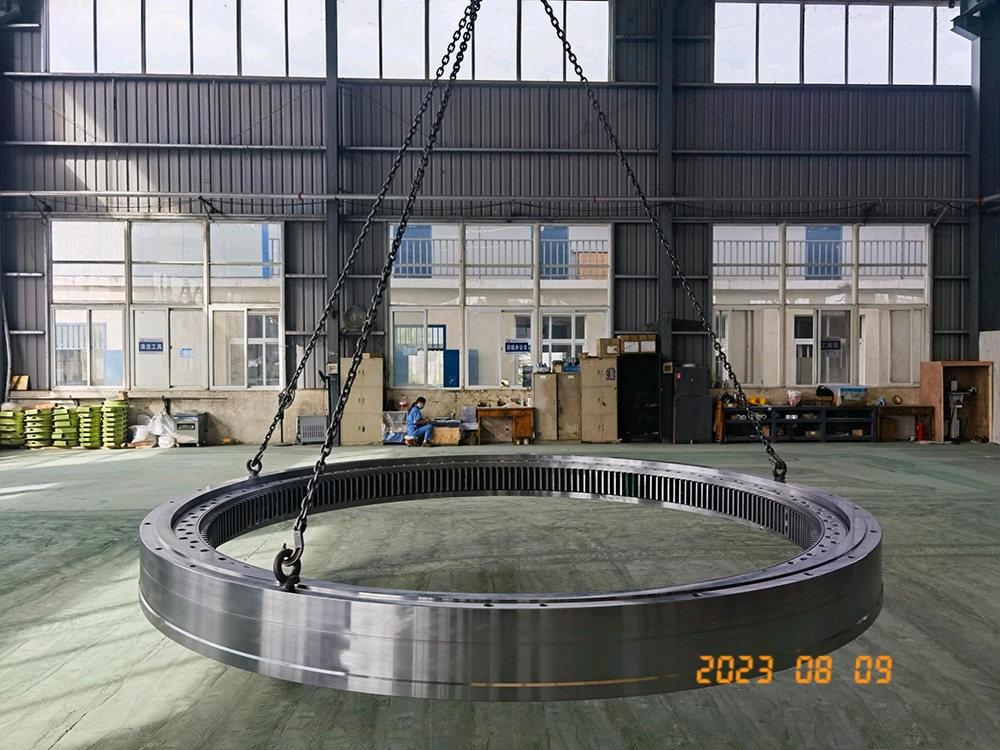
The Operating Characteristics of Slewing Bearings
To understand why slewing bearings cannot operate at high speeds, it is essential to examine their design and operational characteristics. Slewing bearings consist of an outer ring, an inner ring, and rolling elements (such as balls or rollers) that facilitate movement between these rings. Unlike traditional rolling bearings that primarily rely on pure rolling motion, slewing bearings often experience a combination of sliding and rolling motion.
This dual motion is particularly pronounced due to the geometry and load distribution within the bearing. When a slewing bearing rotates, the rolling elements may not roll perfectly along the raceway but instead slide against it to some extent. This sliding friction is significantly greater in slewing bearings compared to other types of rolling bearings. As a result, when operated at high speeds, the increased friction leads to elevated temperatures within the bearing assembly. Excessive heat can cause lubrication breakdown, material degradation, and ultimately premature failure of the bearing.
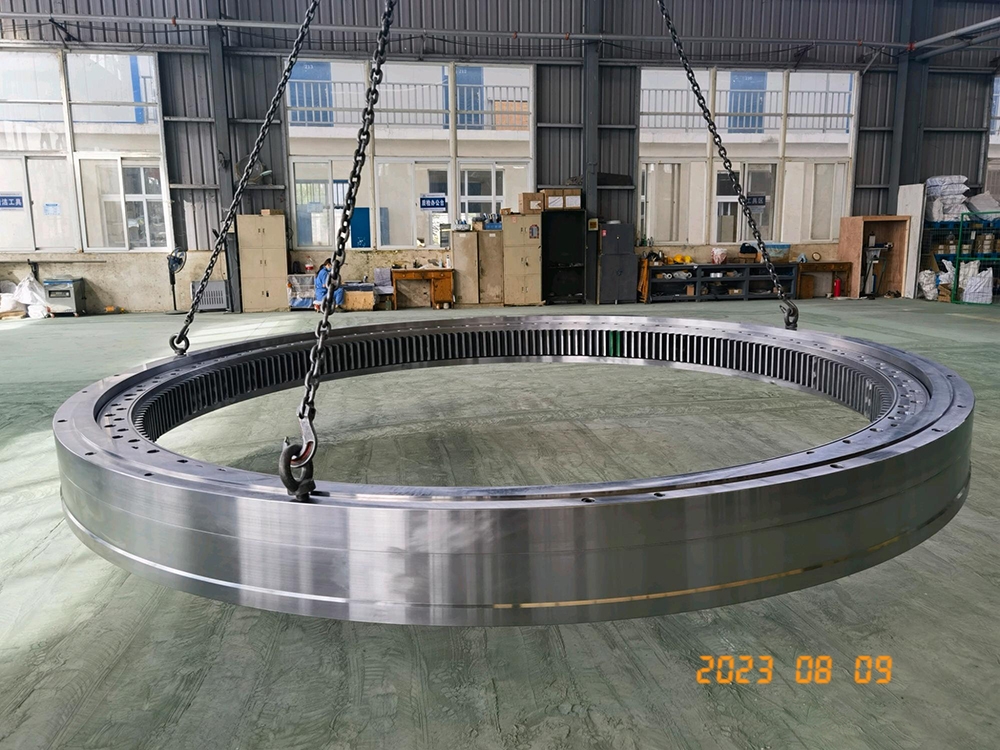
The Impact of Centrifugal Forces
Another critical factor that limits the operational speed of slewing bearings is the impact of centrifugal forces generated during high-speed rotation. Slewing bearings are designed to support heavy loads—often weighing several tons. When these heavy loads are subjected to high rotational speeds, the centrifugal forces acting on them can become substantial.
For instance, consider a crane equipped with a slewing bearing that supports a load of several tons while rotating at high speed. The centrifugal force acting on this load can be calculated using basic physics principles; as speed increases, the force exerted outward from the center of rotation increases exponentially. This situation creates significant stress on the slewing bearing's structure and can lead to catastrophic failure if the forces exceed the design limits of the bearing.
In practical terms, operating a slewing bearing under such conditions poses serious safety risks. The potential for mechanical failure not only jeopardizes the equipment but also endangers operators and personnel working nearby. Therefore, maintaining safe operating speeds is paramount to ensure both safety and reliability in heavy machinery applications.
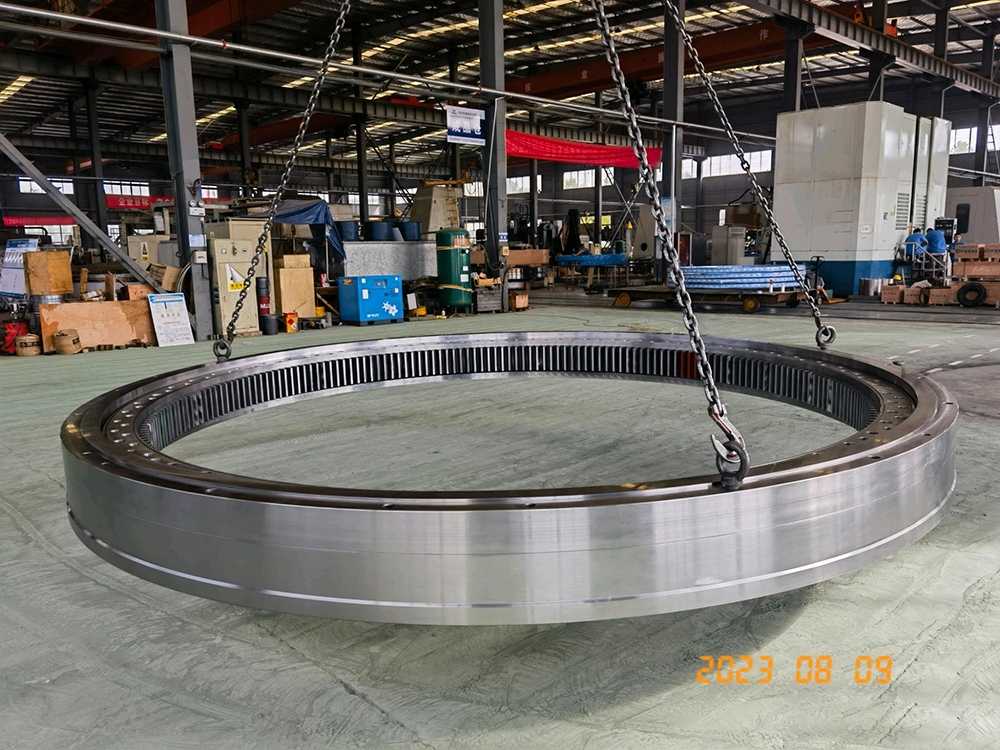
Equipment Requirements and Design Considerations
Most equipment that utilizes slewing bearings is designed for heavy-duty applications where precision and stability are more critical than speed. For example, cranes used in construction sites or excavators employed in earth-moving tasks require controlled movements to lift or transport heavy materials safely. These machines rely on slow and steady movements rather than rapid rotations to perform their functions effectively.
The design philosophy behind these machines emphasizes stability and load-bearing capacity over speed. Consequently, slewing bearings are engineered to meet these specific requirements rather than accommodate high-speed applications. The operational parameters for these machines typically involve low rotational speeds that allow for precise control over movements while minimizing wear on mechanical components.
In addition to their design considerations, manufacturers often specify maximum allowable speeds for slewing bearings based on extensive testing and analysis. These specifications take into account factors such as load capacity, lubrication type, ambient temperature conditions, and expected service life. Adhering to these guidelines is essential for ensuring optimal performance and longevity of both the slewing bearing and the equipment it supports.
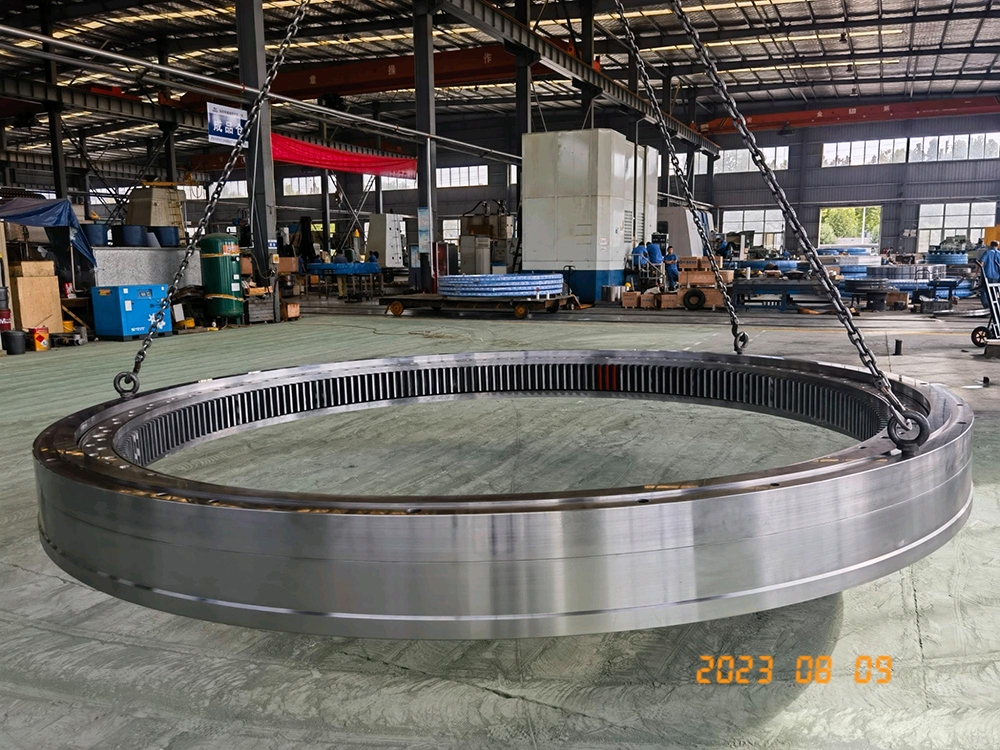
Consequences of High-Speed Operation
Attempting to operate a slewing bearing at speeds beyond its recommended limits can lead to several adverse consequences. As previously mentioned, excessive heat generated by increased friction can compromise lubrication systems, leading to accelerated wear and potential failure of rolling elements. Additionally, structural integrity may be compromised due to excessive centrifugal forces acting on the bearing components.
Moreover, when a slewing bearing fails during operation—especially under load—it can result in catastrophic incidents that may cause injury or damage to surrounding equipment or personnel. Such failures can lead to costly downtime for repairs or replacements and may also result in legal liabilities for operators who fail to adhere to safety guidelines.
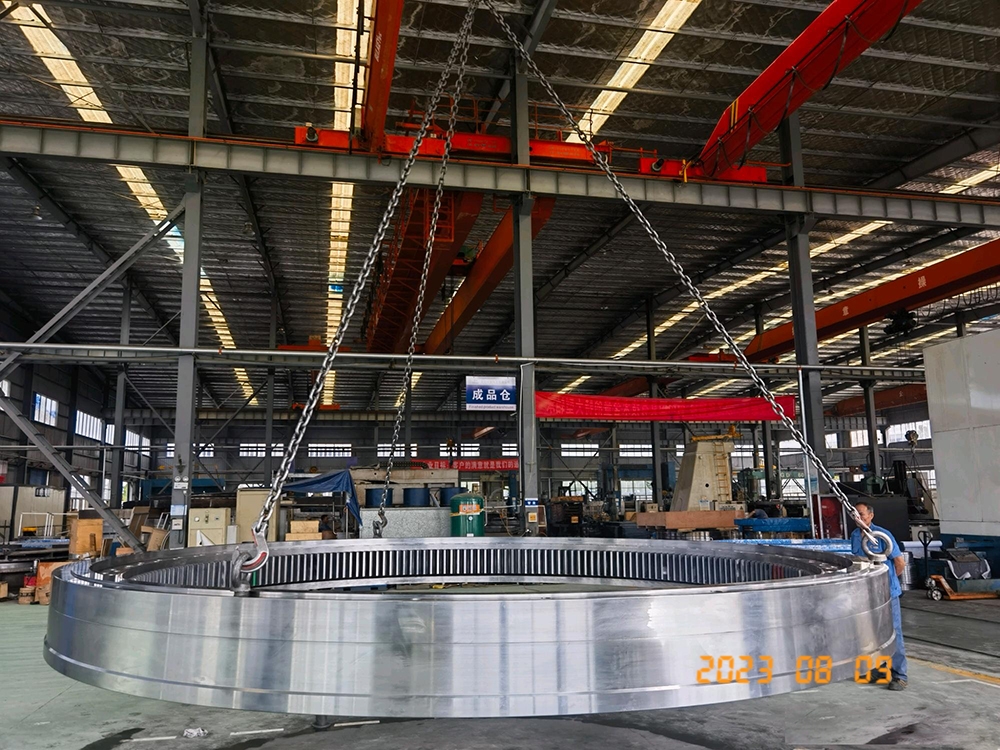
Best Practices for Using Slewing Bearings
To maximize the performance and lifespan of slewing bearings while ensuring safe operation, it is crucial to follow best practices during installation and use:
1. Adhere to Manufacturer Specifications: Always consult manufacturer guidelines regarding maximum allowable speeds and load capacities for specific slewing bearing models.
2. Regular Maintenance: Implement a routine maintenance schedule that includes inspection of lubrication systems, checking for signs of wear or damage, and ensuring proper alignment during installation.
3. Monitor Operating Conditions: Keep track of operating temperatures and loads during use. If temperatures exceed recommended levels, consider reducing speed or load until normal conditions are restored.
4. Training Operators: Ensure that all operators are trained in safe operating procedures specific to equipment using slewing bearings. Awareness of limitations can prevent misuse.
5. Use Appropriate Lubrication: Select lubricants that are suitable for the operating conditions (temperature range, load type) to reduce friction and wear within the bearing assembly.
Conclusion
In conclusion, while slewing bearings are invaluable components in heavy machinery applications due to their ability to handle significant axial and radial loads as well as overturning moments, they are not designed for high-speed rotation. The combination of sliding friction during operation, substantial centrifugal forces generated by heavy loads at high speeds, and the nature of equipment they are paired with all contribute to this limitation.
By understanding these factors and adhering to best practices for operation and maintenance, users can ensure optimal performance while safeguarding against potential failures associated with inappropriate use of slewing bearings in high-speed applications. This proactive approach not only enhances safety but also extends the lifespan of both the bearings themselves and the machinery they support.


